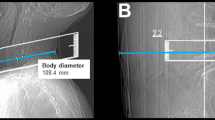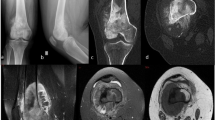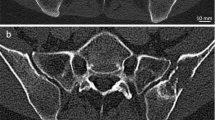Abstract
Eighty-four patients with breast cancer at high risk of bone metastases were investigated with magnetic resonance imaging (MRI) of the thoracolumbar spine. Of 58 patients with normal limited skeletal surveys (LSS) and bone scans (BS), 4 (7%) had MR images compatible with malignant infiltration. Fourteen patients had abnormal bone scans with normal or non-diagnostic plain films; 7 of these patients (50%) had MR images compatible with malignant infiltration. Twelve patients had single or multiple wedge collapses of uncertain aetiology on plain film; MR demonstrated metastatic disease as the cause of wedge collapse in 7 (58%). MRI may define a group of patients with extra-osseous relapse who have occult metastatic disease. Although the detection rate in patients with primary breast cancer is low (4/45), MRI is of value in determining the cause of wedge collapse in postmenopausal women with breast cancer and may elucidate the cause of an abnormal bone scan with normal or non-diagnostic plain films.
This is a preview of subscription content, access via your institution
Access options
Subscribe to this journal
Receive 24 print issues and online access
$259.00 per year
only $10.79 per issue
Buy this article
- Purchase on Springer Link
- Instant access to full article PDF
Prices may be subject to local taxes which are calculated during checkout
Similar content being viewed by others
Author information
Authors and Affiliations
Rights and permissions
About this article
Cite this article
Jones, A., Williams, M., Powles, T. et al. Magnetic resonance imaging in the detection of skeletal metastases in patients with breast cancer. Br J Cancer 62, 296–298 (1990). https://doi.org/10.1038/bjc.1990.281
Issue Date:
DOI: https://doi.org/10.1038/bjc.1990.281
This article is cited by
-
Prevalence of extramammary findings on breast MRI: a large retrospective single-centre study
La radiologia medica (2013)



